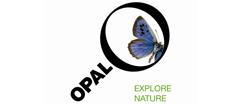Trees
This list provides further ideas and resources for teachers taking part in the BBC Terrific Scientific campaign. It offers activities linked to the investigation on trees.
- ALL
- Activity sheet
- External link
Activity sheet
How to Find the Height of a Tree
This resource, aimed at upper primary level, provides six activities to find the height of a tree. Linked to the topics of measurement, geometry and ratio it provides an opportunity for estimating, measuring and calculating. Teachers’ notes are provided which outline each method, along with a children’s worksheet.
Education Pack: Trees - Vital Statistics, Describing and Measuring Trees
This resource supports learning about trees and is great to use when visiting a woodland area, local park or even school grounds. The activities also help to develop measuring and data handling skills.
The activities are:
Leaf bingo – match leaves to their descriptions
Leaf identification - use a guide to help identify leaves
Measuring trees – take a bark rubbing, measure a tree and calculate its age
Canopy area - measure the tree canopy area
Tree rings
This teaching package investigates the science of tree rings (dendrochronology). It looks at cut tree trunks to determine the age of the tree, how fast it grew and climatic conditions during its growth. It also includes a case study of an area in North Staffordshire where forest trees were cut down.
The life of trees
In this activity children make careful observations of trees by estimating the number of leaves and branches, drawing leaves and taking bark rubbings. Other ideas could be to take photographs of trees and leaves. This activity could be done at different times of the year so children are able to observe a change over time and reinforce work on lifecycles and seasons.
Close encounters with trees
This activity encourages students to make observations, record data and be aware of the links between weather and trees. Students work with their peers to collect data using drawings or photographs. They also make notes about the weather and surroundings so they can refer back to this data at a later time.
External link
Tree Identification Key
Once you have collected leaves you could use this website to help identify them. Children could then go on to create their own keys to identify the tree from which the leaf has fallen. This could link to habitats, interdependence and adaptation and branching data bases in ICT.




